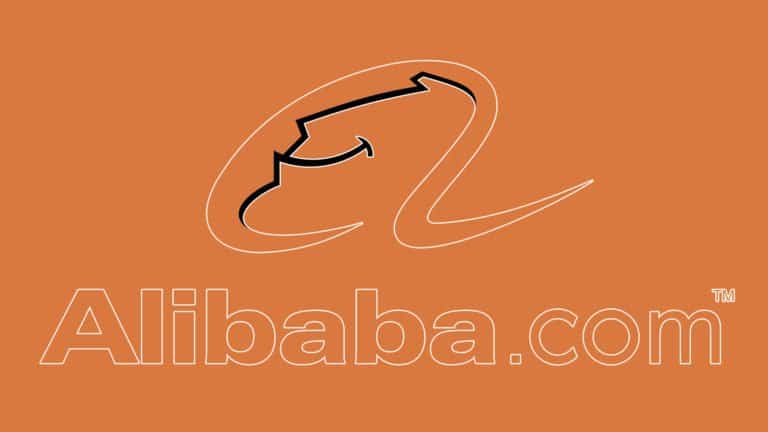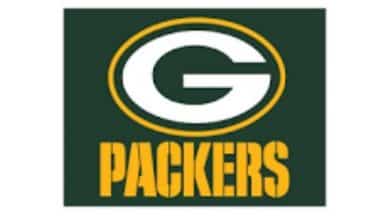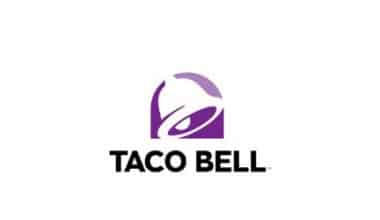Alibaba, one of the world’s leading e-commerce platforms, was founded in 1999 in China. Today, the company operates globally and has an extensive supplier directory that connects directly to suppliers and buyers worldwide using a one-of-the-kind logo.
But despite the reference to a fairy tale image in the marketplace’s name, the Alibaba logo has nothing to do with fairy tales. The company engages in online sales of a variety of products, and its visual identity reflects this. And for marketing purposes, the most important factor is a legible store name. Let’s find out how this company has been able to achieve all it has achieved in such a short period.
Overview
Alibaba is a China-based, multi-structured commercial and technology corporation. It operates in various industries, including retail, Internet development, e-commerce, payment services, and cloud computing. Its portfolio contains many globally successful business enterprises. The business was established in 1999. Hangzhou, Zhejiang Province, is the location. There are eighteen founding members, led by Jack Ma.
The History of the Alibaba Group
Alibaba’s history begins in December 1999, when Jack Ma assembled and led a group of 18 tech pioneers to help him realize his vision. After observing the enormous gaps in China’s internet e-commerce space, the group began developing their vision for an online marketplace that could effectively serve all of China’s internet users.
Like Apple co-founders, Steve Jobs and Steve Wozniak, the Alibaba founders began in a small apartment in the Chinese city of Hangzhou. Ma, having lived in the United States during the beginning of the e-commerce boom, returned to China with a vision of establishing a similar business in China.
However, Ma’s early career goals were quite different. Ma, born in Hangzhou on September 10, 1964, desired to teach English. In the late 1980s, the demand for English language instruction among China’s capitalist middle class soared, creating an excellent career opportunity.
Ma eventually obtained a teaching position but quickly transitioned into the business world. After being passed over for a manager position at a KFC in China, he traveled to the United States to enroll at Harvard University.
Read Also: Alibaba Dropshipping: Is Alibaba Safe? (+ 2023 How-to Guide)
Ma’s plans to attend Harvard were derailed when he began using the internet. He observed that in contrast to the rapidly expanding e-commerce industry in the United States, only some companies in China were engaged in the same. Soon after that, he launched a website devoted to e-commerce in China.
Ma’s efforts quickly drew the interest of a few Chinese investors who shared his vision for an East Asian e-commerce company. Ma established a second business, which he named China Pages. The business had achieved a $1 million valuation within three years.
Ma’s vision of a B2B online marketplace for China began materializing with China Pages. He approached several investors with his idea and secured approximately $35 million in venture capital for his proposed new business, Alibaba. Ma and his partners founded Alibaba in late 1999, just as the new millennium was about to begin.
Ma’s vision of a B2B online marketplace for China began to take shape with China Pages. He approached several investors with the concept and secured approximately $35 million in venture capital funding for his proposed new business, Alibaba. Ma and his partners founded Alibaba in late 1999, just as the new millennium was about to begin.
Changing to a Higher Gear
Alibaba’s timing was great. By the turn of the twenty-first century, online shopping had gained widespread consumer acceptance. China’s large population translated to a sizable number of internet users, which was positive for Alibaba.
China’s hundreds of millions of consumers awaited a solution like Amazon or eBay, already thriving in the United States. The country’s transition from communism to capitalism resulted in the emergence of a vast consumer market. Numerous consumers now had respectable employment and disposable income, making this the ideal landing spot for Alibaba.
Alibaba secured additional venture capital shortly after its launch, which was used to launch new websites. Taobao, a consumer-to-consumer marketplace comparable to eBay, was crucial among these. Soon after, Aliwangwang, an instant-messaging application that assisted consumers in locating the best online deals, debuted. Then came AliPay, a payment platform similar to PayPal. Alibaba was now poised to dominate the Asian e-commerce market with these formidable platforms.
Read Also: Amazon vs Alibaba: Differences, Models, Revenue, Cash-Flow, Similarities
During its first decade of operation, the company attracted some rather unexpected business partners: the Chinese government. As the government grew suspicious of foreign business investors, it launched a relentless internet control campaign. These efforts prevented Amazon and eBay from entering the Chinese market, leaving the field open for Alibaba to dominate.
In 2005, the Chinese government approved a partnership between Alibaba and the American tech giant Yahoo.com, with Alibaba tasked with managing Yahoo.com’s business operations in China. Alibaba had by then established itself as the market leader in the Asian e-commerce industry and has maintained its position ever since.
2014 marked a turning point in the company’s history when its $25 billion initial public offering shook Wall Street. Alibaba’s IPO resulted in a valuation of $231 billion, establishing it as the largest e-commerce company ahead of Amazon, Walmart, and eBay.
Alibaba Logo History
The enormous organization was founded by Chinese students and acquaintances of English teacher Jack Ma. Alibaba.com is an online marketplace where small and medium-sized businesses can sell their products. Legally, the service was registered in the Cayman Islands, but it operated out of the founder’s apartment in Hangzhou, China.
In 1999, the newly established commercial structure in the virtual world received two substantial investments. These contributed to its emergence as a formidable competitor. The company posted its first substantial profits three years later, confirming its resolve to participate in global trade. And for a long time, it operated at a loss to attract a large number of users and eliminate rivals. This was the case with the American website eBay, which intended to dominate the Chinese market via Taobao, an Alibaba subsidiary. However, it had to scale back its operations.
Over time, the scope of the corporation’s interests expanded to encompass multiple directions. In addition to its commercial activities, it implemented other projects through its brands and subsidiaries. China is now a colossus in the Asian economy, which tremendously impacts international trade. When it opened the divisions, it wished to maintain its identity, so the logo needed to beecided. The symbol exists in a form similar to how it appeared in 1999.
Old Alibaba Logo
Despite the widespread criticism from designers, the Alibaba logo has proven its viability. One, it’s versatile. It is also practical. Finally, it is memorable. It depicts a lowercase “a” with an inner space in the shape of a human face.
According to the concept, it is the face of a pleased customer. Even though he is in profile, he is grinning widely. This is evident in the long arc, which resembles a closed lip, and the horizontal line at the end of the arc. In addition, the letter displays a determined chin, a straight nose, and upward-facing bangs. They are black-outlined on a beige background. Below is the domain name of the online marketplace, Alibaba.com. The first section is in bold font, while the second is in thin font.
New Alibaba Logo
The modern version of the logo can confidently be referred to as outdated because almost nothing has changed. Except for a few small details, the statement is accurate. For example, the face’s black outline was removed, the beige color was replaced with orange, and one of the fonts was modified. In addition, the icon with the lowercase letter “a,” representing the Alibaba corporation, is now in front of the text rather than above it.
As with its work, the Chinese company takes its visual identity extremely seriously. It does not attempt to adapt to the existing market but rather attracts users, including buyers and sellers. This is how the company demonstrates its dependability, emphasizing its permanent entry into the global market.
Alibaba Symbol
The logo’s centerpiece is a lowercase letter “a” containing a human face. Supposedly, this is a satisfied customer’s face. At the very least, the individual has a broad smile.
Below the logo is the text “Alibaba.com” written in smaller font. The initial portion of the website’s name is in bold, while “com” is in a regular-weight font.
Alibaba Emblem
The designer community has criticized the logo for Alibaba. First, the font, Linotype Univers, was criticized for being completely generic. In addition, some designers believed that the logo’s central visual metaphor, a customer’s face within an “a,” is simply too predictable and was likely the author’s first thought.
However, what matters most is that by market capitalization, Alibaba frequently appears on the list of the top 10 publicly traded companies. In light of the nature of the company’s business, the logo was adequate. At least, it did not impede its ascent to the top.
Alibaba Font
The Alibaba logo comprises two fonts: a version of the Univers font for “Alibaba” and a version of the Pluto Sans font for “com.”
To be exact, the first typeface’s full name is Linotype Univers Com 740 Extended Heavy. The Lynotype Universe font family is based on a revised version of the original Univers font family created by Adrian Frutiger over seventy years ago.
The second typeface used is Pluto Sans Regular. It was created in 2012 by Hannes von Dohren. Even though it is based on the architecture of the Pluto Family, it has a very clear appearance and a large x-height (the distance between the baseline and the middle line of lowercase letters), which makes it perfectly readable in small sizes.
Alibaba Group Colours
Orange is the color most easily seen in dim light or against water, so it is frequently used for life rafts and jackets. This specifically refers to the hue known as safety orange, which is very similar to the hue used on the Alibaba group logo.
Related Articles
- TOP CLOUD SERVICE PROVIDERS IN 2023: Ultimate Guide
- 10 BEST ONLINE WHOLESALE VENDORS IN 2023
- HOW TO DROPSHIP ON SHOPIFY: Is Shopify Dropshipping Still Profitable? (+ Free Tips)(Opens in a new browser tab)
- E-COMMERCE COMPANIES: List of the Top Largest E-commerce Companies 2023 (Updated)
- TOP AMAZON COMPETITORS: All You Need To Know






